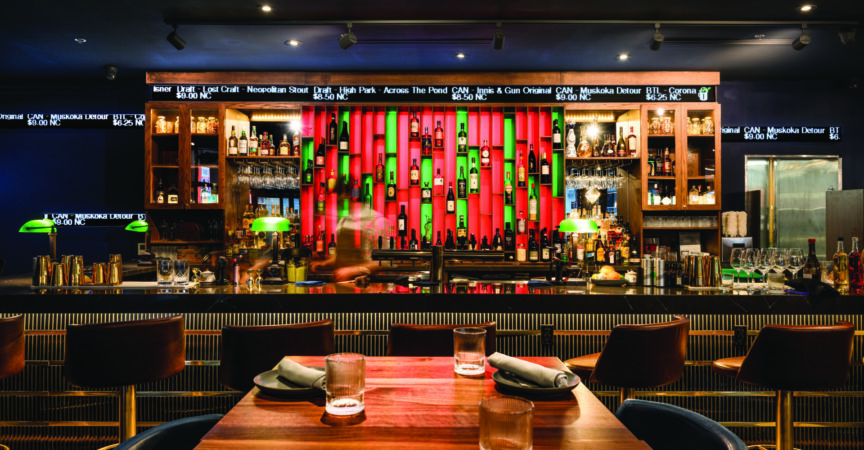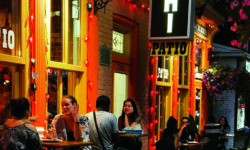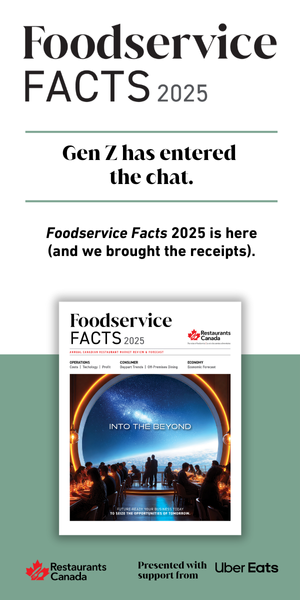Scaling with Style: How to Design Restaurant Interiors for Growth
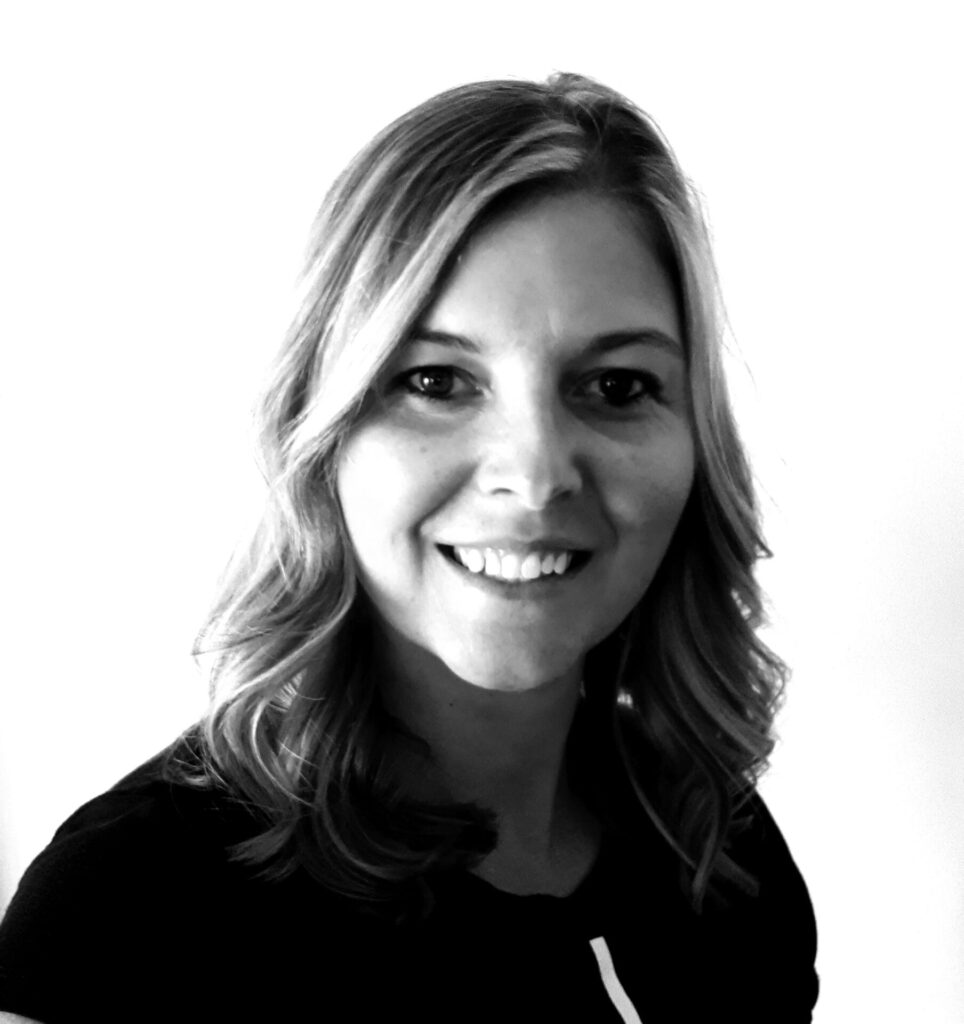
Yellowbird Design Studio, led by founder and lead designer Stacy DiCarlo, is a full-service design agency specializing in the hospitality sector, with a focus on restaurant interiors, from single-locations to national chains. Based in Hamilton, Ontario, the studio is known for its innovative, immersive dining spaces and has become a trusted partner for restaurateurs across Canada.
In this interview, Stacy shares expert insights on how Yellowbird carries core design elements from one
location to another, smart design planning, and what is driving design for dining spaces.
MENU: How did you start Yellowbird Design, and what is your focus?
Stacy DiCarlo: I founded Yellowbird four and a half years ago. We specialize in design for commercial interiors, with a strong focus on hospitality. Restaurants have been our bread and butter. I’ve been in the industry for about 24 years and at least 20 of those years have been dedicated largely to restaurant design. I was looking for something fast-paced, and restaurants fit that mould.
MENU: What sets interior design apart from other design disciplines, like graphic or architectural design, and how do they work together throughout the process of planning a new restaurant concept?
SD: There’s a lot of crossover between design disciplines. My background is in architecture, so I blur the lines between architectural and interior design. Branding and graphic design also come into play, especially with quick-service restaurants, where there’s a lot of overlap. We don’t position ourselves as branding experts—we collaborate with branding agencies or restaurant consultants when
a new brand is being developed. For graphic-heavy concepts, like a recent quick-service project we did, we brought in a graphic designer to collaborate. Interior design includes everything from the layout including guest or service flow, to sourcing and specifying furniture, finishes and lighting throughout the space. It’s about creating a feeling and invoking emotion throughout the entire space.
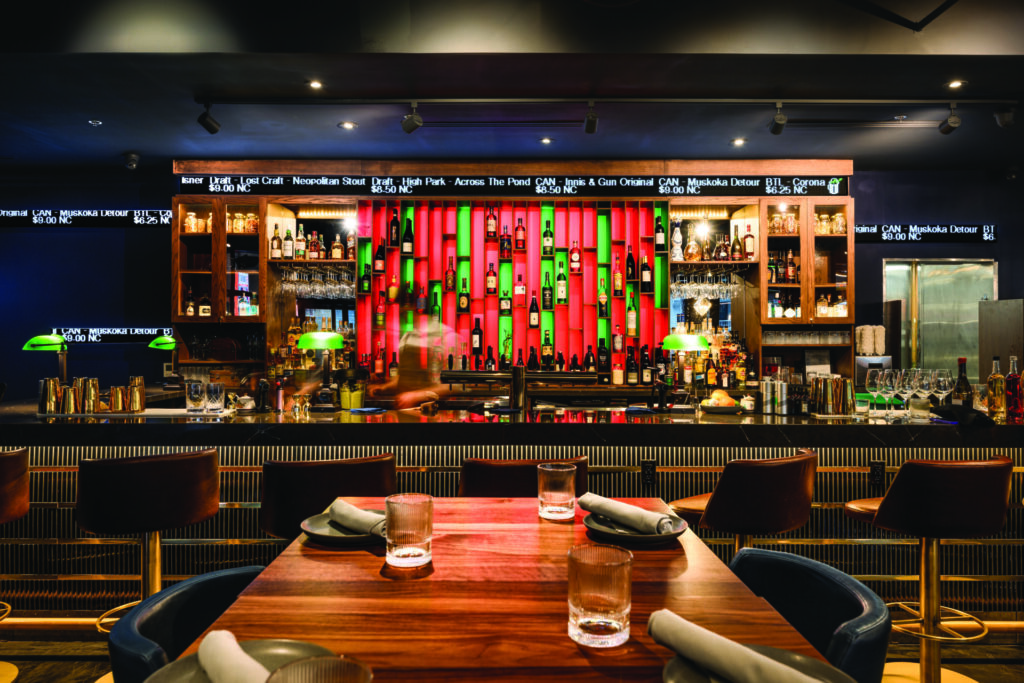
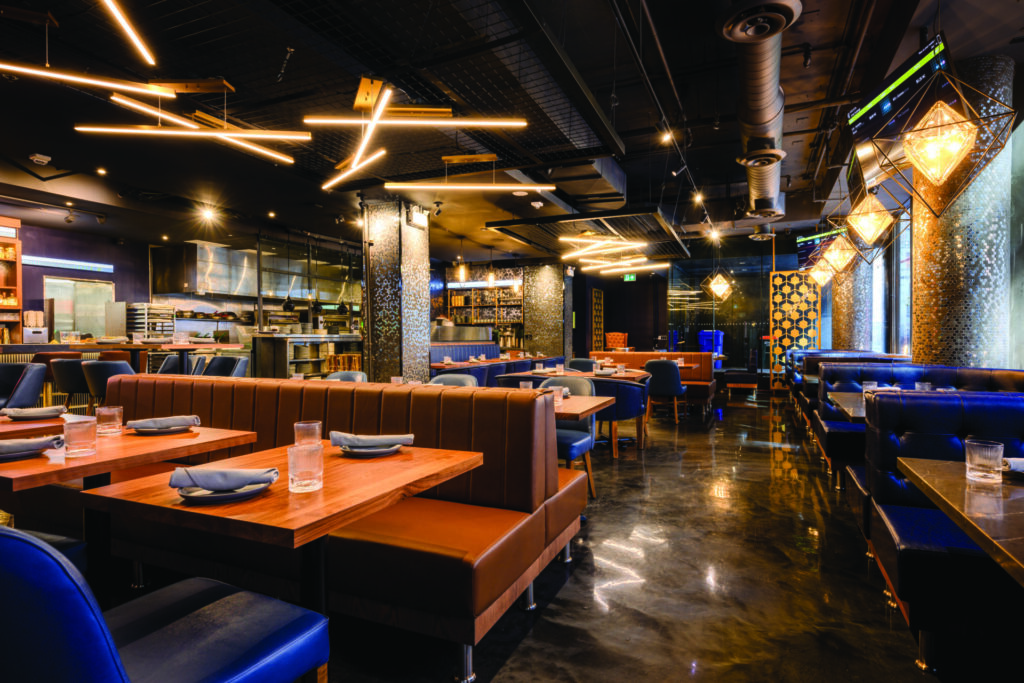
MENU: How do you approach design for restaurants that are expanding to a second or even multiple locations?
SD: If you’re looking to scale, the top recommendation is to work with a professional designer or consultant who can audit your brand and space. It’s crucial to identify those core design elements that should be repeated for brand consistency while allowing each location to be unique and adaptable to the local market. You want to carry forward those core elements that make your brand what it is, but the design also needs to reflect the flavour of the neighbourhood.
If we know a brand has plans to scale, we design with that in mind by layering the design. We establish core brand elements that will remain consistent, then add extra layers that can be tailored to the local culture or neighbourhood. However, if scalability isn’t part of the initial plan, we focus on creating the best possible design for that individual
location. If they later decide to scale, we revisit the design to see what worked and what might need to evolve.
MENU: Should original interior designs evolve over time?
SD: Absolutely. It’s important to stay flexible and open to adjustments after a restaurant has been in the market for a while. Core elements might shift depending on how they’re received by the audience.
MENU: What role does site selection play in your design process for expanding independent restaurants, and how do you ensure each expansion feels authentic to both the brand and the neighborhood?
SD: It’s huge, though we’re not always brought in early enough to advise on it. Sometimes clients already have a location in mind, but when we’re involved early, we can help steer them toward a site that aligns with their brand. For example, choosing between a heritage building versus a modern condo can dramatically affect the design direction. The architecture of the building can either be part of the brand or something that we leave behind as we move to new locations.
We recently worked with the owners of Left Field Brewery to expand their brand from a craft brewery to a full-service brick-and-mortar restaurant with on-site brewing. We explored which elements in their current brand felt authentically true to the brand as well as taking learnings from their current design and operations to determine our best path forward to evolve the design. Some of these elements may be a more obvious, literal finish, like red brick that speaks to the heritage of their original building, but some may be more subtle, such as the positioning of their draught taps to the entrance and the way they greet their guests upon entry.
MENU: What pitfalls should operators look to avoid when expanding to new locations?
SD: One common pitfall is being too “cookie-cutter”—trying to exactly replicate a previous location. Guests are looking for a more unique and memorable experience, so it’s important to find a balance between brand consistency and creating something fresh and authentic. I like to think of it as a 60/40 rule—60 per cent of the design should maintain brand consistency, while 40 per cent can be customised for the local market.
The kitchen; however, is one area where I believe it’s actually okay to be cookie-cutter. If you’ve developed an efficient layout, you should replicate it. Menu consistency is key, though smaller locations may require a scaled-down menu or you may want to leave room for local features. When we need to scale the kitchen down, we work with chefs and equipment consultants to ensure the core elements of the kitchen remain efficient.
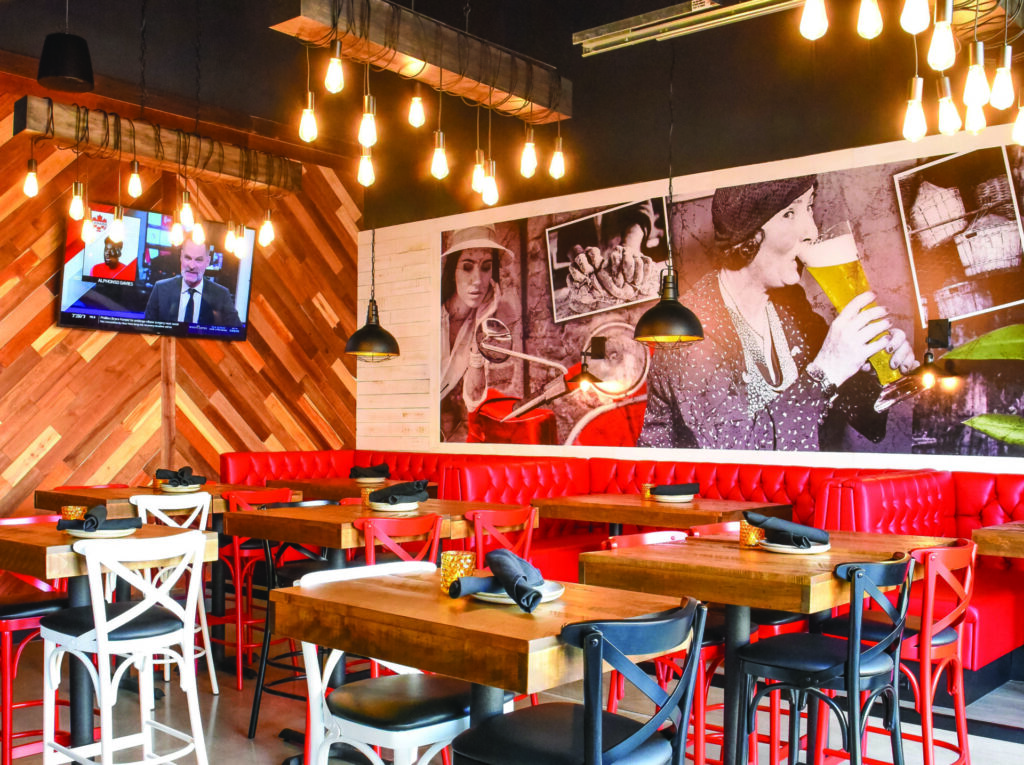
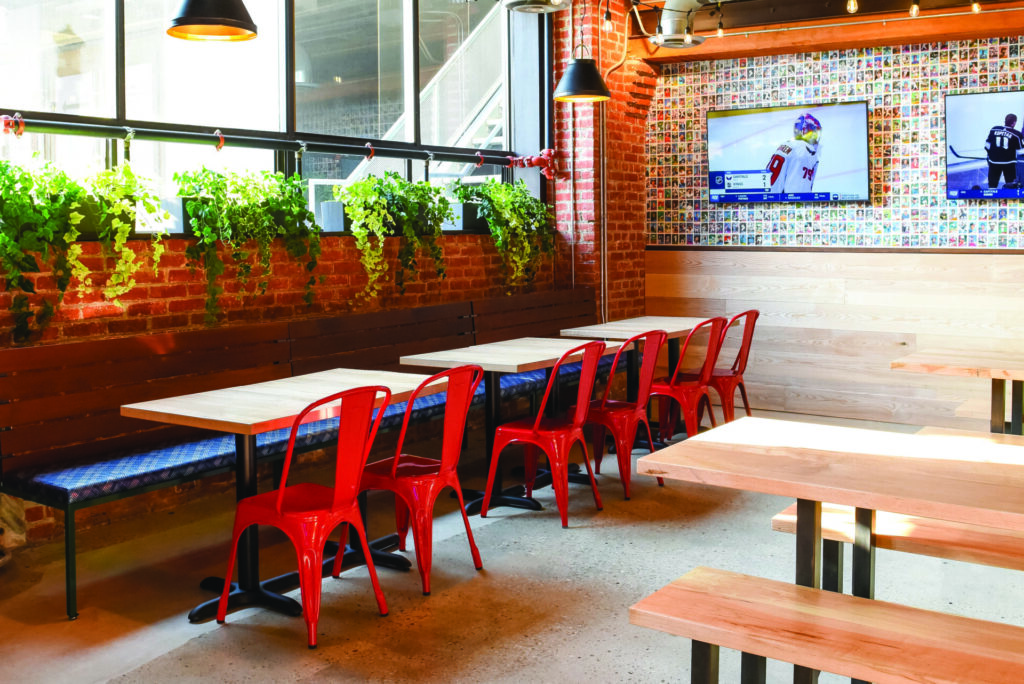
MENU: How do you collaborate with restaurant operators to balance aesthetic aspirations with budget constraints during the design process?
SD: This is always a challenge. The key is communication—getting a clear idea of the budget up front. We also recommend bringing in a construction manager early on to run numbers from the design concept stage. That way, we avoid surprises later when the design is fully developed. Knowing the budget from the start allows us to focus on the key elements that will have the biggest impact. Even on a tight budget, it’s possible to create a fantastic design by being strategic about where you spend.
MENU: What are some current trends you’re seeing in restaurant design?
SD: One of the biggest trends we’re seeing is the demand for immersive, experiential design that engages all the senses. Guests want a unique and memorable experience. Another trend is the shift toward smaller restaurant footprints, often with more specialised menus. This is something we’re seeing both in full-service and quick-service models. Lastly, outdoor spaces are being used more efficiently, especially over the last four years or so, with more blurred lines between indoor and outdoor areas.
The restaurant industry moves at a fast pace and designs need to evolve every 5-7 years to stay relevant. Working with a skilled designer when developing the initial design concept can help ensure the design foundation will stand the test of time while more superficial design elements like artwork or feature walls can be layered within the design allowing for an easier transition of these fads that come and go.
MENU: What advice do you have for a first-time restaurateur looking to open a new concept?
SD: My advice would be to work with professionals and know your brand before you start. You need to have a solid understanding of your menu, your target audience, and your price point before bringing in a designer. You should have answers to basic questions like square footage, the type of space, and whether the location was previously a restaurant. These details will help the design process run smoothly.
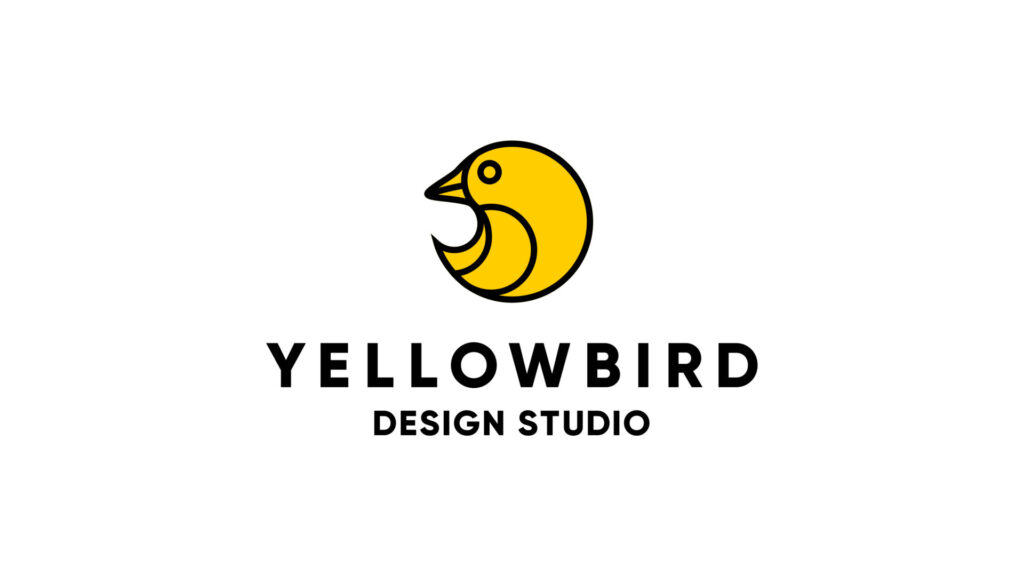
Follow Yellowbird Design Studio: IG: @yellowbirddesignstudio



